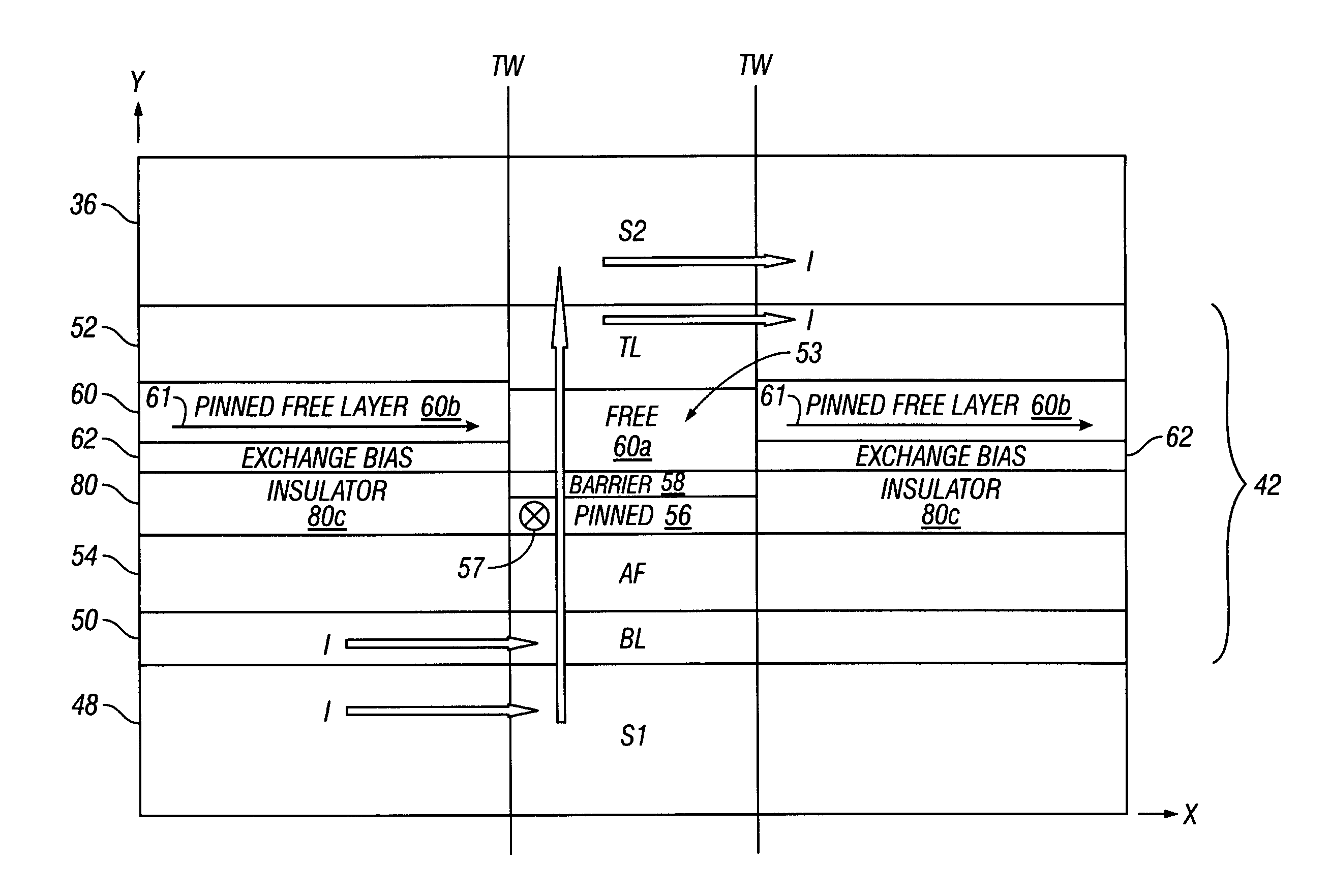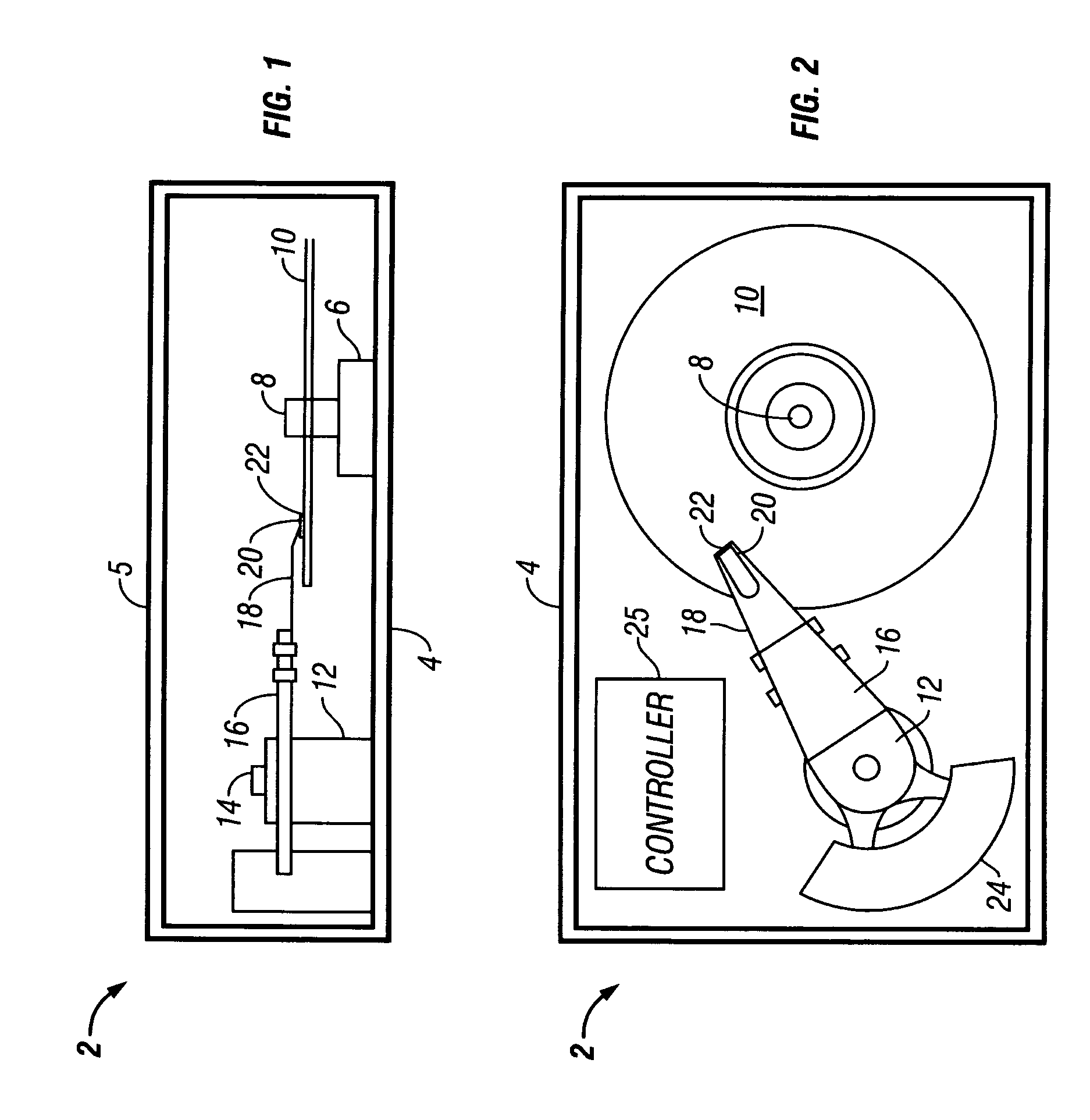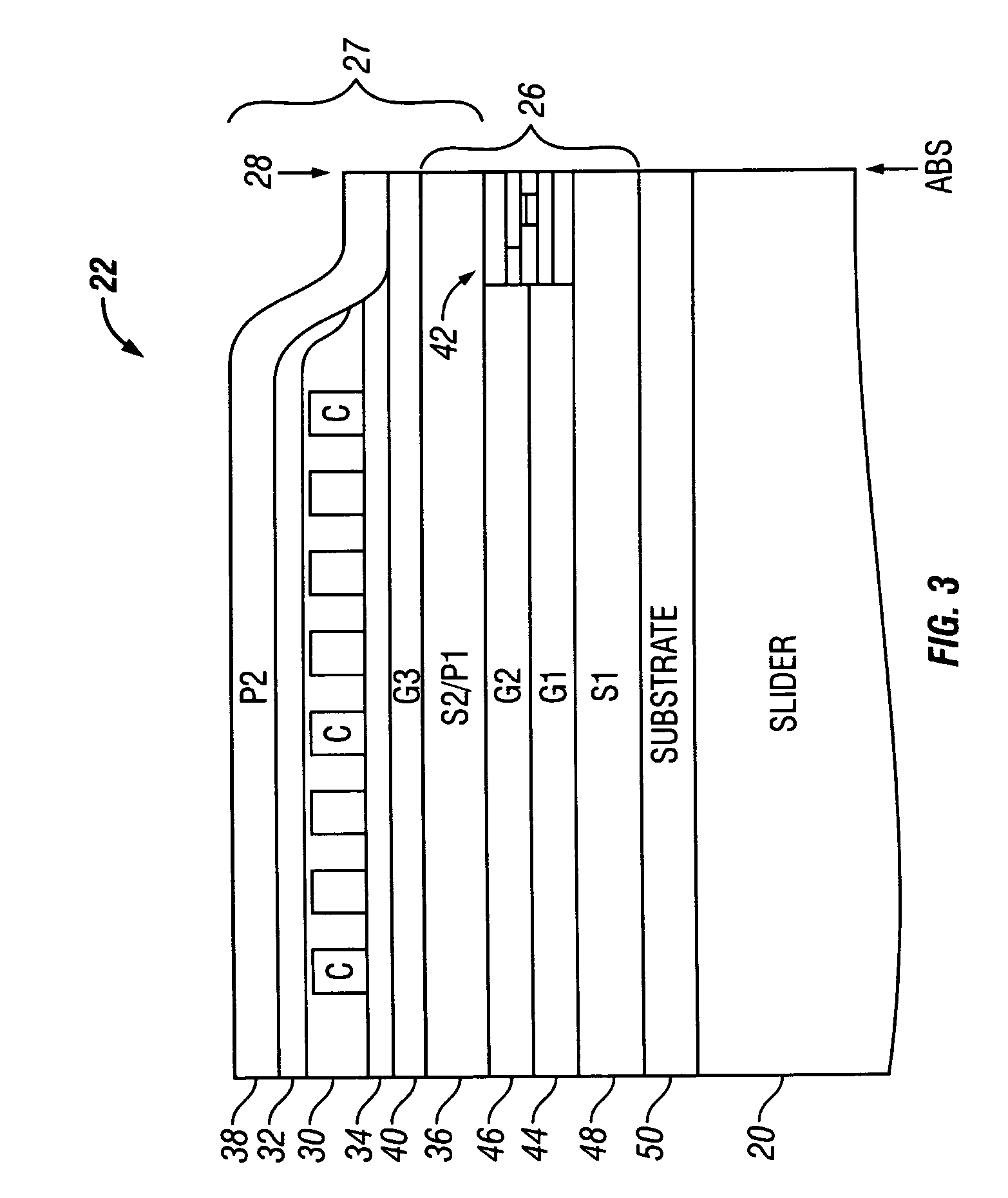Self aligned magnetoresistive flux guide read head with exchange bias underneath free layer
a self-aligning magnetoresistive flux and read head technology, applied in the field of magnetoresistive sensors, can solve the problems of reducing read sensitivity and losing hard biasing effectiveness relative to the free layer
- Summary
- Abstract
- Description
- Claims
- Application Information
AI Technical Summary
Benefits of technology
Problems solved by technology
Method used
Image
Examples
Embodiment Construction
[0039]Turning now to the figures, wherein like reference numerals represent like elements in all of the several views, FIGS. 1 and 2 illustrate an exemplary disk drive 2 that incorporates a magnetoresistive sensor in accordance with the invention. Note that the disk drive 2 is shown in greatly simplified schematic form, with only those construction details that are necessary for an understanding of the invention being represented. As to these illustrated components, it should be understood that all are conventional in nature unless otherwise indicated below.
[0040]The disk drive 2 conventionally includes a base casting 4 made from cast aluminum or other suitable material. A cover 5 is removably mounted thereto via a hermetic seal (not shown). The base casting 4 mounts a conventional spindle drive motor 6 having an associated drive spindle 8. The drive spindle 8 carries a disk 10 for high speed rotation therewith. Other disks (not shown) may also be carried on the drive spindle 8 to f...
PUM
| Property | Measurement | Unit |
|---|---|---|
| thickness | aaaaa | aaaaa |
| thickness | aaaaa | aaaaa |
| thick | aaaaa | aaaaa |
Abstract
Description
Claims
Application Information
 Login to View More
Login to View More - R&D
- Intellectual Property
- Life Sciences
- Materials
- Tech Scout
- Unparalleled Data Quality
- Higher Quality Content
- 60% Fewer Hallucinations
Browse by: Latest US Patents, China's latest patents, Technical Efficacy Thesaurus, Application Domain, Technology Topic, Popular Technical Reports.
© 2025 PatSnap. All rights reserved.Legal|Privacy policy|Modern Slavery Act Transparency Statement|Sitemap|About US| Contact US: help@patsnap.com



